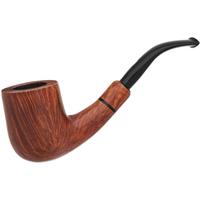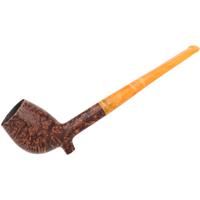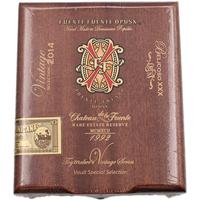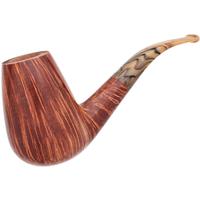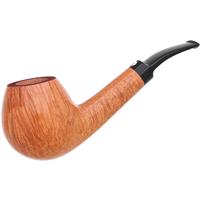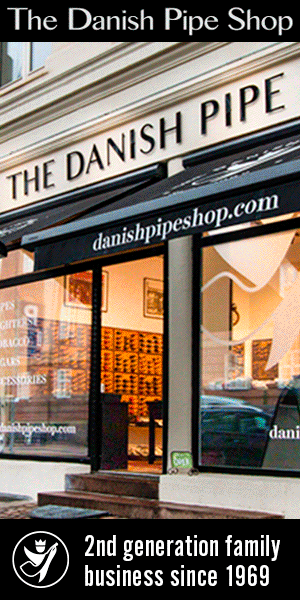Misterlowercase: can you point me to any documents or sources that discuss the "rotating copper cylinders, or toasting table" I've never heard of them.
I dunno why those 2 examples stick in my head, but they do for some reason.
The bit about the Rattray's table was first read about in an interview with pipemaker Brad Pohlmann talking about visiting Perth some time in the early 70's - it was published in Pipes & Tobaccos Magazine.
There is an old booklet though, which was widely circulated and can easily be found in full online,
called
A Disquisition for the Connoisseur where Mssr. Rattray speaks of "panning" ---
The bit about McConnell's, I'm pretty sure I picked it up by reading one of Mssr. Pease's wonderfully written articles, but they are also mentioned in an old brochure, especially noting the crusty attributes ---
But to be fair, I'd reckon some of the contemporary blenders also use those techniques, to a degree at least.
Stuff like cutter-top tins and the way they were processed, though, was something very special and the only close example I can conjure would be how back when Drucquer's would run their tins through an oven.
Interesting stuff is this excerpt from
Liverpool 5 describing the method, and note that some of the darker flakes could see almost an hour in the "heater" ---
This might be a convenient moment to describe the heater tester used for all cigarettes and tobacco tins not put through the Thermokept or Tingey cold vacuumising machines.*
These testers were large cylinders 7' long x 3' diameter, fitted with 23 tubes each 3½" diameter which were surrounded with steam heater coils. The cylinder rotated slowly on its axis, making one revolution every 40 seconds. Steam was applied to the coils at 30-35 lbs in² which produced a temperature inside the tubes of about 280°F.
Tins were placed into the tubes as the cylinder rotated pushing preceding tins through the tubes until they fell out down a chute at the other end. At the exit end, the thin tagger plate which had become distended by the heat in the tester was "pricked" with a gramophone needle held in a stick of solder. The heated air inside the tin pushed out and the puncture was immediately soldered. The application of the hot iron burned up most of the air remaining in the tin, leaving a partial vacuum of around 4½ inches.
The time taken for a tin of cigarettes to pass through the heater was about 6½ minutes.
For tobaccos, however, the heating feature of the testers was in effect used to extend the processing of the tobacco.
The number of tins fed into each tube and the number of tubes used was varied according to a very carefully calculated formula for each and every brand and packing so that some passed through the heater in 9 minutes whereas others took 22½ minutes.
Some brands, especially the darker flakes or navy cuts were put through a second time after a 48 hour interval so that the total time in the heater was often as much as 50 minutes.
This treatment of tobaccos had been practised since the earliest days and was considered to be an essential part of the processing.It was only abandoned when tobacco packings changed to snap vac or skruseal packings some time after World War 2.
____________________________________________________________________________________________________________________
*note: the 2 machines mentioned above made slightly cheaper to produce tins and were less labor intensive, but resulted in a lower vacuum of 2-3", while the conventional heat processed cutter-top usually had 4-5", but all tins still had to be checked after the sealed fact for "leakers".
-------------------------------------------------------------------------------------------------------------------
:idea:
I think discontinued and hard to get makes the legend, otherwise each smoker is stuck with their own legendary blend. What ever you have smoke 10's of ounces of, or always go back to is the most likely to be the next legendary blend.
That seems right on the spot to me.
Penzance in particular is an astounding phenomenon and its legend continues to grow it seems, for much different reasons as to why the legend of Sobranie grew so large, but Penz closely parallels that attainment of "most holy aura".
I think it's good to have legends, but in the end all that matters is ones personal hagiography of revered saints 'n such.
The best vintage tobacco I've ever had the pleasure of smoking was made by Thomson & Porteous, an old cutter-top of Scots Cake, and they're hardly a legend in pipelore, yet I hold them in the highest regard possible.
And, different circles have different legends as well, something a little obscure like Bendigo Plug can develop a certain cultlike status in short order after a few smokers were able to get their hands on some, and although quite well-known in its home country, it was virtually unheard of in the USA.
Local legend goes a long way too, and it's interesting how these things develop over time.



